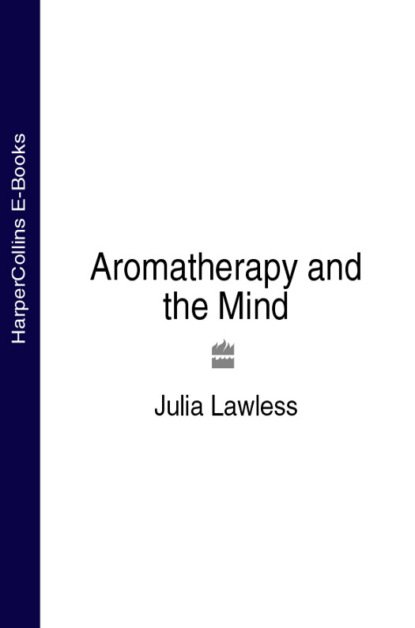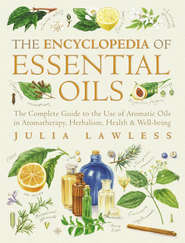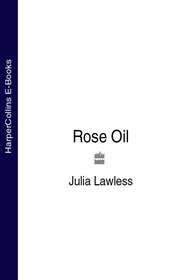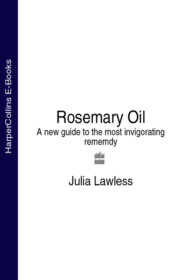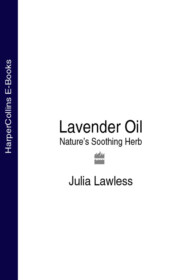По всем вопросам обращайтесь на: info@litportal.ru
(©) 2003-2024.
✖
Aromatherapy and the Mind
Настройки чтения
Размер шрифта
Высота строк
Поля
Many flowers and plants have retained a ritual significance, though the original meaning has been lost. Kissing beneath a sprig of mistletoe at Christmas harks back to an old pagan custom when it was hung in the house throughout the year as a symbol of peace, friendship and goodwill.
The Chinese especially have always endowed certain plants and flowers with symbolic attributes, for example, the aged and crooked pine tree stands for virtue triumphant in adversity. The much loved and fragrant cassia was admired by poets chiefly for its perfume and, according to myth, grew on the moon – possibly because its scent was strongest at night! In the Chinese tale Dream of the Red Chamber, the noble family’s impending collapse is presaged in the garden by a begonia which suddenly bursts into flower in mid-November. Reversals of nature cannot but bode ill, for they reflect an inner lack of harmony which sooner or later leads to disaster. On the other hand, the vigorous but unexceptional blossoming of common plants such as the orchid or chrysanthemum signify that all is well within the household.
In Western fairy tales, trees and plants are often involved as life tokens, the life force of a person being involved with a tree planted at birth. In the Grimms’ story The Juniper Tree, a murdered boy is buried beneath a juniper tree with his mother, only to be reborn like a phoenix from its depths:
Then the juniper tree began to stir itself, and the branches parted asunder, and moved together again, just as if someone were rejoicing and clapping his hands. At the same time a mist seemed to arise from the tree, and in the centre of this mist it burned like a fire, and a beautiful bird flew out of the fire, singing magnificently, and he flew high up in the air, and when he was gone, the juniper tree was just as it had been before.
(#litres_trial_promo)
In this story, the juniper tree is the source of new life and hope from which the released soul arises. In the original myth of the phoenix, the fire-bird dies and is reborn from the aromatic ashes of fragrant wood. The ‘spiritual bird’ arises from the depths of the pyre like incense from a fragrant fire. Indeed, the ancient Egyptians believed that the phoenix first brought incense to the Land of Punt in his claws and that the scent of incense was his own scent. The Hebrews thought the phoenix was a god reincarnated and the Egyptians saw him as the soul of Osiris, the god whose breath smelt of myrrh and incense. According to the Egyptian legend, at the end of his long life, the phoenix builds himself a nest of frankincense and cassia on which he dies, and from his corpse arises the new phoenix. Thus the phoenix, like scent, depicts the vital essence or spark of life, the immortal soul; in this sense it can be equated with the ‘fire-water’ of the shamans and with the ‘quintessence’ of the alchemists. As Gaston Bachelard says in Fragments d’une poetique du feu, ‘Odours in and of themselves make myths possible …’
Slowly, however, with the growth of rationalism in the West, the symbolic imagination was repressed – only poets and children were allowed to speak in the language of the heart:
Rational thought, in its pursuit of objective knowledge, denies the validity of subjective visualisation. Its diabolic methodology has supplanted the symbolic perspective, and the material world is perceived as existing in its own right quite dissociated from the person observing it.
(#litres_trial_promo)
Yet the symbolism that has accumulated around particular plants or flowers in the course of time, together with the significance of their fragrance, is still very much a part of our collective cultural conditioning today. This underlying mythic language still communicates itself, often via the unconscious, and conditions our response both to its form and to its scent. Symbolism and myth still speak to us in the language of the unseen, just as scent communicates itself to our soul directly, influencing our mood and emotions in a subtle manner.
The gods and goddesses are not dead – it is just that we no longer see them or believe in them! To reawaken their power is to reinvest matter with spirit, to perceive the virtues concealed within the external manifestation of form. The virtues of the deities reside within ourselves and in nature; the virtues of plants express themselves through scent and through their ‘essence’. To honour the presence of the spirit within is to become attuned to a way of seeing using the ‘mind’s eye’ and the symbolic imagination.
THE ODOUR OF SANCTITY
Certain flowers have always tended to attract a spiritual significance or symbolism, just as certain scents have always been associated with an experience of the sacred, notably the rose. The Persian writer, Avicenna, dedicated a whole book to the spiritual and medicinal virtues of his favoured plant, the rose. Among the Sufis, the experience of the divine is intimately associated with the form and scent of the Queen of Flowers:
And above all, the repeated splendours of glowing dawns, the profusion of rose gardens, white roses and red roses, the shades of the rose bushes, the divine presence flashing in the brilliance of a red rose.
(#litres_trial_promo)
The rose and its fragrance have been associated with love and feminine beauty in all cultures alike from time immemorial. Dedicated to Venus/Aphrodite, the very scent has a sensual and rich allure. Yet the rose is also associated with the heart and has always been used symbolically to indicate religious passion or devotion. The Madonna is often depicted in a garden of roses in icon paintings. Here, the rose indicates Mary’s love for the child Jesus, while more profoundly it suggests the love required for the nurturing of the Christ principle within. According to tradition, the Virgin appeared to St Dominic bearing a chaplet of roses, and the first rosary of beads (made from compressed rose leaves) was made in commemoration of this vision. In the esoteric Western tradition, the appearance of angels is also said to be accompanied by the aroma of roses!
Celestial scents have often accompanied religious experiences. Charles Fourier’s vision of souls in heaven took the form of ‘aromatic bodies’ floating about within an ‘aromatic shell’ which surrounded the planet like a bubble, while in the Islamic esoteric text The Jasmine of the Fedeli d’amore, Rûzbehân experienced the celestial world as being suffused with wondrous perfumes:
The love of ardent desire was born in my heart and I felt my heart merge with that love. I spent all the time in deep nostalgia, for then my heart plunged into the Ocean of Memory of eternal pre-existence and into the scent of the perfumes of the celestial world.
(#litres_trial_promo)
Later he describes a vision of a ritual of inner ascent in which he saw himself as if from above, being initiated into another realm of understanding. The substance which is used to mark the transition is aromatics:
He notices that a pot is suspended, under which there burns a pure and smokeless subtle fire, fed by odoriferous herbs … The Shayk breaks one of the loaves into the bowl and pours the contents of the pot into it. ‘It was,’ our mystic says, ‘a kind of oil, but something very subtle, of a totally spiritual nature.’
(#litres_trial_promo)
In many cultures, there are also documented experiences of the ‘odour of sanctity’ – a certain undefinable smell which surrounds holy men or women. According to first-hand accounts of this phenomenon, there is not simply an odour of sanctity, but a whole range of sacred scents. The record of Hubert Larcher describes St Lyddwyne de Schiedam’s odour as having seven components: cinnamon, cut flowers, ginger, clove, lily, rose and violet. St Teresa of Avila’s scent, on the other hand, consisted of lily and orris, and changed after her death to include violet and jasmine. Like secular perfumes, holy odours changed and ripened with the course of time, and could even last long after the physical body was dead. A witness who examined St Teresa’s body 12 years after her demise remarked upon ‘the sweet odour it released, the freshness and beauty of the seemingly still-living flesh’.
(#litres_trial_promo)
In historical or mythic terms, the odour of sanctity probably originated in ancient Egypt, where the souls of the dead were judged by Anubis, the jackal-headed Lord of the Underworld. With his keen nose he was able to smell the ‘essence’ of each person and thus determine the purity of their soul. In this sense, a person’s odour reflects their inner depth, their soul quality.
Those seeking a more rational explanation for the cause of the ‘odour of sanctity’ have come up with a variety of theories based mainly on somatic or pathological changes in the blood. Dr Hubert Larcher, however, has advanced a view suggesting that mystical life could result in a dramatic slowing down of the metabolism and that ecstatic states may result in the formation of ‘odoriferous compounds’ within the organism:
Ultimately the condition of the soul controls a chemistry capable of removing some of its somatic links and thus of helping it to take wing.
(#litres_trial_promo)
He further suggests that the alcohols pumped into the blood during the ecstatic state could lead to a kind of mystical intoxication, which, like certain drugs, could open the ‘doors of perception’ and induce visionary experiences. The shared ‘celestial visions’ reported by the nuns who surrounded St Teresa’s deathbed may be related to this process, bearing in mind ‘the possible action of the molecules involved in the odour of sanctity – which was especially strong and almost unbearable – on the nervous system and psychic functioning of those nuns’.
(#litres_trial_promo)
THE DOORS OF PERCEPTION
Using aromatics and herbal drugs to open the doors of perception was a domain of expertise specific to the traditional shaman. The shaman featured largely in primitive forms of medicine because he or she was able to travel back and forth across the invisible barrier that divides matter from spirit, and act as a mediating influence:
The shaman himself must be a master of psychological control … he rejoins that which was once a totality – man and the animals, the living and the dead, man and the gods … and in providing this integration, the shaman provides his magical cure.
(#litres_trial_promo)
Within a contemporary context, the shaman’s magical flight could be seen as a form of psycho-therapeutic practice. Indeed, the key to health from the shamanic perspective was seen to lie predominantly in the domain of the psyche – and one of the principal ways of gaining access to this realm was by the use of herbs and aromatics.
An important part of the shaman’s rigorous and challenging training was acquiring knowledge about medicinal plants, including those with hallucinogenic powers. Those plants which had curious psychic effects included aromatics such as hemlock (Conium maculatum), mugwort (Artimesia vulgaris), bay (Lauris nobilis), nutmeg (Myristica fragrans) and cannabis (Cannabis sativa).
Such knowledge has survived to the present day. In 1985, the Chumash medicine woman Chequeesh told researcher Will Noffke that she had learned of her native heritage by utilizing the ‘dream herb’ mugwort – a plant which is used to produce a narcotic (and toxic) essential oil. Hemlock, a poisonous aromatic plant with a foetid smell, was a vital part of the European witch’s arsenal, and enabled her to fly away on her broomstick – the equivalent of the shaman’s magical flight. In the Hindu Kush, the sibyl inhales fragrant smoke from the sacred cedar in order to induce a trancelike state before pronouncing the oracle, much in the same way as the pythia
Вы ознакомились с фрагментом книги.
Приобретайте полный текст книги у нашего партнера:
Приобретайте полный текст книги у нашего партнера:





